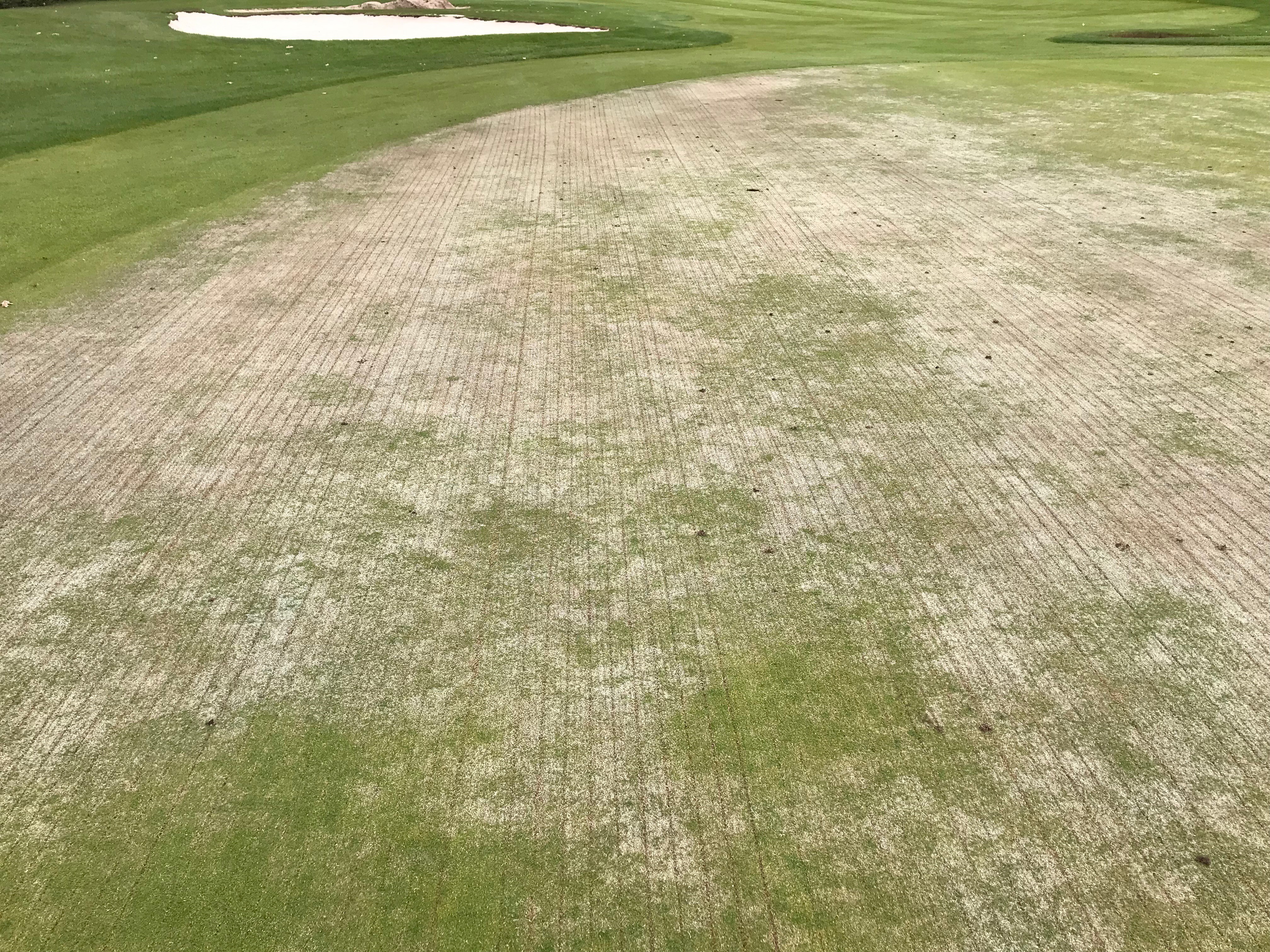Winterkill on golf course update from northern Michigan
There was sporadic and significant winterkill on golf courses in northern Michigan this year.

Last week, I toured several golf courses in northern Michigan that suffered winterkill. Ice cover appeared to be a problem again this year as many reported having ice cover of several inches from approximately mid-January through March. This duration of ice cover would certainly be long enough to cause damage to annual bluegrass putting greens, as 30-45 days is typically cited as the length annual bluegrass can survive under ice cover. However, there were several instances of winterkill that I found difficult to blame on ice cover.
Isolated damage on high points, ridges and steep slopes isn’t typical of ice cover injury but rather desiccation injury. In these cases, damage most likely would have occurred in late December or early January prior to ice formation when the turf was exposed. In addition to ice cover and possibly desiccation, damage may also have been caused by crown hydration freeze injury and low temperature kill.
Reestablishing greens
As in many years, the exact cause of death in every scenario is difficult to determine. The questions now are primarily related to reestablishment. To this point, the weather has been anything but cooperative in facilitating recovery, as air temperatures have remained cool with nighttime temperatures approaching freezing on numerous occasions. Many golf courses have already interseeded damaged areas with creeping bentgrass seed. As temperatures warm, these areas will begin to fill in but it will take time and ultimately does depend on the weather.
There are many different methods used to incorporate seed into damaged greens. Vertical mowing (verticutting), spiking, aerification and using slit seeders can all be effective. Slit seeders are probably the most effective but most golf courses simply don’t have a slit seeder, so verticutting, aerification and spiking are commonly used. Apply seed to damaged areas followed by either verticutting or spiking to move the seed into the soil. The aerification, verticutting and spiking should also stimulate some of the annual bluegrass seed reservoir in the soil to germinate as well. In some cases, sodding or hex plugging small dead areas out may be a better option.
A fertilizer with phosphorus should be applied at the time of seeding to encourage germination. Once seedlings begin emerging, regular foliar feeding fertilizer applications may help establishment as cool soil temperatures and the limited root systems of the newly germinated seedling are not as conducive to nutrient uptake as mature plants. On warm, windy days, frequent light irrigation cycles will be necessary to keep the surface of the greens moist during the germination process and the early seedling stage. Mowing heights should be raised to at least 0.150 inch and then gradually brought down to more normal mowing heights. Based on our research, mowing can begin eight to 10 days after germination (covers will speed this up). Do not be afraid to mow frequently in the beginning, as it helps the new seedlings establish.

Covers and diseases
If covers are available, use them on severely damaged greens. This will increase temperatures, especially on warm, sunny days, and speed up the recovery process. Cotton grow covers can be cut into smaller pieces and used on greens that have small damaged areas allowing the green to remain in play. If covers are used on greens with major damage, temporary greens will have to be established. Once sufficient establishment has occurred, the covers can be removed during the day to allow play to occur on the greens. At night, cover the greens to retain the heat of the day and further encourage as much growth as possible.
Apply microdochium patch fungicides to prevent this disease from developing, especially if covers are used. The QoI or dicarboximide fungicides are good choices for management of this disease.
Reestablishment and opening greens for play
Temporary greens are still in play on some golf courses, and as spring progresses, the pressure to play greens will only increase. One of the most common questions is how soon can we play the greens? My suggestion is to assess each green individually and open greens as soon as the superintendent determines they are ready for play. Of course, the logistics and pressure of making these decisions can be immense as golfers may “suggest” that you open a series of consecutive greens to allow for consecutive playing of holes or facilitating posting 9-hole scores for handicap purposes. The concern with trafficking newly seeded greens too soon is that the turf will lose density and the greens will essentially go backwards in terms of turf cover. Ultimately, this could lead to turf thinning and loss that by July and August may result in golfers playing on a mix of bare soil, algae and moss.



 Print
Print Email
Email